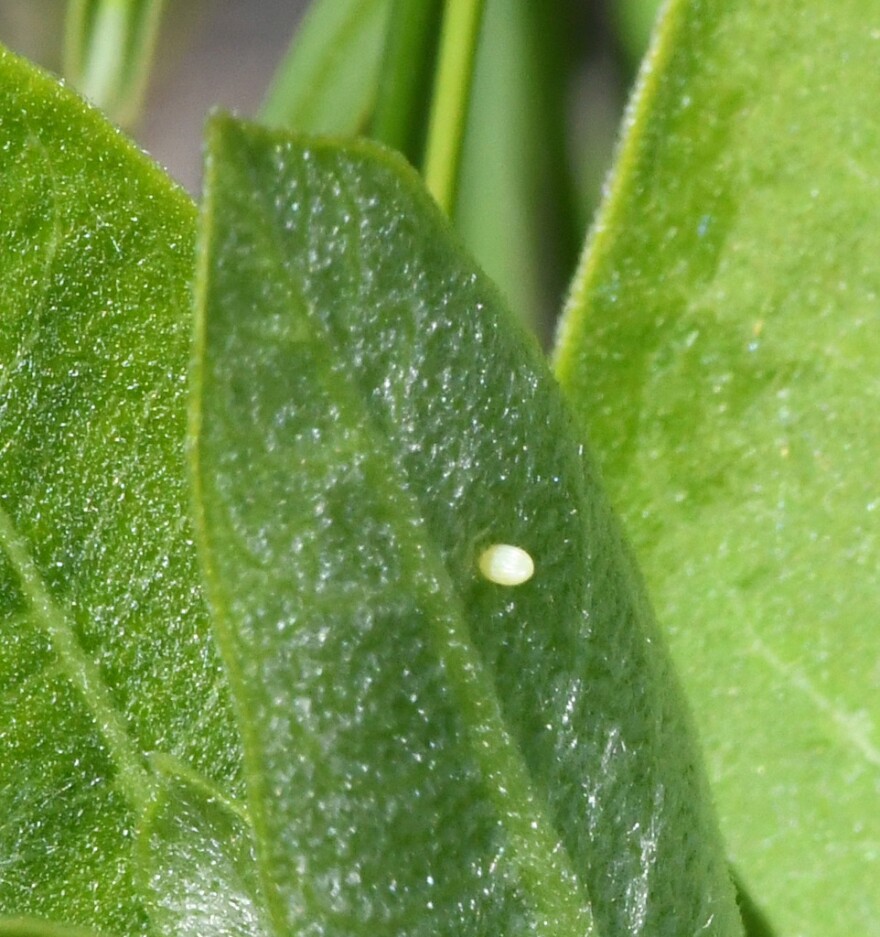Wendy Caldwell, executive director of the Monarch Joint Venture partnership, joined Heidi Holtan and John Latimer for the July installment of Mark Jacobs’ "Decline of Native Pollinators" series.
Monarch butterflies are a candidate species for endangered status, meaning they meet the criteria but have not yet been listed. Migrating populations have declined by over 85% and have less than half the needed population size to avoid eventual extinction.
Monarch Joint Venture is a national nonprofit organization headquartered in Minnesota. Staff and partners across the country work together to bolster high-quality habitat for monarchs, Caldwell said.
Monarch populations have declined due to habitat loss, pesticide use and climate change. Monarch Joint Venture seeks to address these challenges with on-the-ground conservation work, scientific research and public education. An upcoming project aims to plant 1.8 billion milkweed plants, which are the host species for monarch butterflies (and the only type of plant monarch larvae eat).
Migration over generations

Migratory monarchs have a fascinating generational cycle. The fall southward migration is completed in one generation, while the spring northward migration is performed by two generations. Monarchs departing Minnesota in the fall fly all the way to Mexico where they spend the winter, coating acres of trees with thick layers of gently fluttering wings. When the weather warms, these same individuals fly north to Texas and the southern United States, where they mate, lay eggs, and finally flutter off to butterfly heaven.
Their offspring, born in the southern United States, are the butterflies we see arrive in Minnesota in spring and early summer. These butterflies make the (shorter) migration north, mate and lay their eggs on milkweed, and die. Their offspring stay in Minnesota through the summer and reproduce here, and those offspring restart the cycle, migrating south in the fall.
-
 The Decline of Native Pollinators: Rebeca Gutierrez-Moreno with the Environmental Quality Board
The Decline of Native Pollinators: Rebeca Gutierrez-Moreno with the Environmental Quality Board -
-
Monarch majesty and meaning
In addition to their cultural importance, monarchs are an important indicator species for the health of our pollinator populations. Because they share habitat requirements and ecosystem functions with other pollinators like bees and moths, monarch populations are a useful bellwether for how pollinators as a whole are thriving (or diminishing).
Their migratory pattern is a large part of what makes them so useful for population studies. For many other pollinator species, direct observation of population size is extremely difficult. For instance, to count the number of rusty-patched bumblebees, you’d have to find and count every individual nest throughout their range. Monarch butterflies, in contrast, are kind enough to gather whole populations in just a few areas each year, making a population census much easier to complete.
Instead of counting individuals, scientists calculate the area of forest taken up by the overwintering monarch swarm. These measurements have shown an alarming decline in the population over the past few decades.
“We went from a population (covering) upwards of 18-19 hectares down to 2. And just a few years ago, it reached a historic absolute low of less than one hectare,” Caldwell said.
Mother’s milk(weed)

Milkweeds are members of the genus Asclepias, named for their thick, white sap. This sap is toxic to most organisms, but monarch butterflies are entirely reliant on these plants. Monarch larvae eat nothing else.
“Without milkweed, we wouldn’t have any monarchs,” Caldwell said.
The issue with milkweed availability isn’t the sheer quantity: there is more than enough milkweed to feed the monarch population. The issue is in its distribution. Due to development and herbicide use, patches of milkweed in some areas are widely separated. This greatly increases the amount of effort a female butterfly must exert to find a suitable patch to lay her eggs.
A female butterfly will lay between 300-500 eggs in her lifetime, according to Caldwell, and the butterflies prefer to spread their eggs over multiple small patches of milkweed, as opposed to sticking to the same area. Thus, a single large “island” of milkweed can help monarch populations, but a wide network of small patches would be more effective.
“There’s a lot of milkweed out there, but we just need to make sure it’s in the right places and at the right time so that they can fully utilize it,” Caldwell said.
Variability and community science
In some years, it may feel like monarchs (and their caterpillars) are everywhere; other years are sparser. Caldwell’s experience shows this is due primarily to high variability between areas more than a reflection of variation in population size year-to-year.
Because these regional variations occur, it’s been important to monitor summer populations systematically. A variety of community science groups are rising to the challenge including Monarch Joint Venture, which started the Monarch Larva Monitoring Project. Through this program, volunteers go out weekly to monitor milkweed plants for eggs and caterpillars. The aggregated data helps determine which regions are experiencing monarch “hotspots” each year.
Funding for this project was provided by the Minnesota Environment and Natural Resources Trust Fund as recommended by the Legislative-Citizen Commission on Minnesota Resources (LCCMR).







